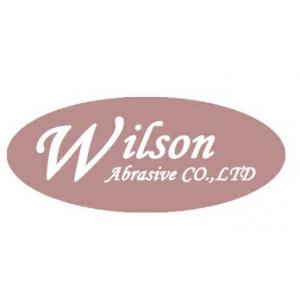Supplier: Wilson Abrasive Co.,Ltd
Contact person: Mr. Terry Ma
Position:
Address: No.3220,HengTai International Building
Country: China
Phone: 8615515998755 - Mobi: 8615515998755
aluminium oxide blasting wholesale price
Price: 3000
In the grinding of free brown corundum abrasives, brown corundum abrasives are randomly distributed on the grinding disc and change continuously with the movement of the grinding disc. Therefore, the density distribution of brown corundum abrasives is uneven and uncontrollable. Whether the brown fused alumina aggregate has too much carbon residue, and whether the natural drying or natural curing time is long enough after removing the mold? Whether the baking temperature rise curve is too fast! Especially during 80-110 degrees!
Low price and poor quality materials must not be used, otherwise it will affect the whole product and cause failure! For free brown corundum abrasive grinding, the size of brown corundum abrasive cannot be completely consistent. In 1920, the hydraulic transmission of the grinder was basically mature, and the thread grinder appeared. The thread grinding wheel made of ceramic bond greatly improved the accuracy of thread tools such as tap and plug gauge.
The development of abrasive tools promotes the rapid development of a series of grinding processes, and the wide application of grinding in various industrial fields, in turn, promotes the continuous expansion and improvement of the variety and quality of abrasive tools. The brittleness is poor, but the toughness is good, and the wear resistance has been greatly improved. This method is suitable for the manufacture of abrasive tools. Before white fused alumina making, we must understand the different properties of the manufacturing method.
Basic refractories are mainly composed of magnesium oxide and calcium oxide, and magnesia bricks are commonly used. Magnesia brick containing more than 80% ~ 85% magnesia has good resistance to alkaline slag and iron slag, and its fire resistance is higher than clay brick and silica brick. It is widely used as high temperature furnace lining material and autoclave lining in petroleum and chemical industry. Acid refractories take silica as the main component, and commonly used are silica brick and clay brick.
It is the product of mixing high-grade cement with different levels of quartz sand. Of course, it has the characteristics of cement products: Free Ca + Mg + ions are continuously precipitated from the pores, resulting in the generation of dust; Sand blasting can make the cleaned surface obtain the required cleanliness and a certain roughness at the same time, and improve the adhesion of the coating on the basic surface.
Low price and poor quality materials must not be used, otherwise it will affect the whole product and cause failure! For free brown corundum abrasive grinding, the size of brown corundum abrasive cannot be completely consistent. In 1920, the hydraulic transmission of the grinder was basically mature, and the thread grinder appeared. The thread grinding wheel made of ceramic bond greatly improved the accuracy of thread tools such as tap and plug gauge.
The development of abrasive tools promotes the rapid development of a series of grinding processes, and the wide application of grinding in various industrial fields, in turn, promotes the continuous expansion and improvement of the variety and quality of abrasive tools. The brittleness is poor, but the toughness is good, and the wear resistance has been greatly improved. This method is suitable for the manufacture of abrasive tools. Before white fused alumina making, we must understand the different properties of the manufacturing method.
Basic refractories are mainly composed of magnesium oxide and calcium oxide, and magnesia bricks are commonly used. Magnesia brick containing more than 80% ~ 85% magnesia has good resistance to alkaline slag and iron slag, and its fire resistance is higher than clay brick and silica brick. It is widely used as high temperature furnace lining material and autoclave lining in petroleum and chemical industry. Acid refractories take silica as the main component, and commonly used are silica brick and clay brick.
It is the product of mixing high-grade cement with different levels of quartz sand. Of course, it has the characteristics of cement products: Free Ca + Mg + ions are continuously precipitated from the pores, resulting in the generation of dust; Sand blasting can make the cleaned surface obtain the required cleanliness and a certain roughness at the same time, and improve the adhesion of the coating on the basic surface.
SEND INQUIRY
Please fill in fully your information to send email
CATEGORY














 Agriculture
Agriculture